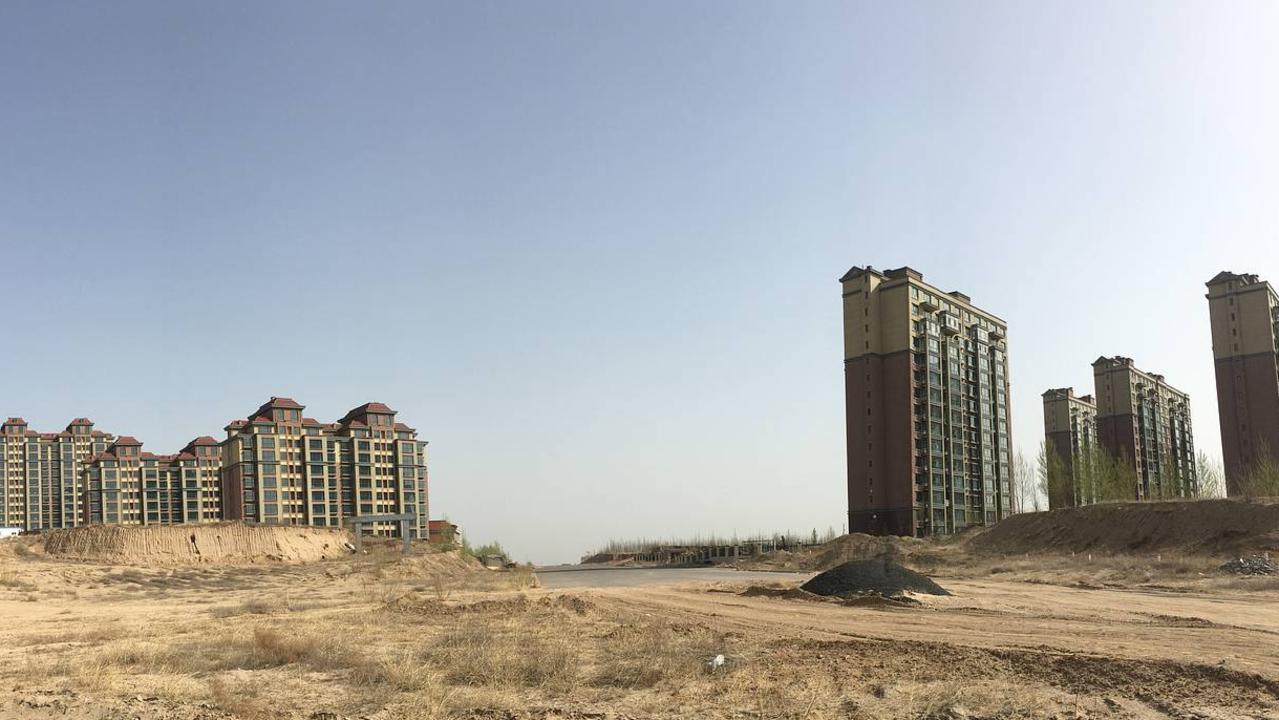China’s radical new measures could cause short-term Aussie boom
China has brought in 36 radical new measures to address their dire situation and it’s likely to cause an influx of money to Australia – for now at least.
ANALYSIS
It’s been two years since China imposed a little-known policy on its property development sector that was to have enormous implications for Australia.
Called the Three Red Lines, the policy aimed to de-leverage China’s ultra-indebted property development sector. This was to stop them from overbuilding versus fundamental demand to prevent ghost apartment blocks and cities from becoming a brake on the Chinese economy via so much wasted effort.
With 90 million empty apartments, enough to satisfy urban population flows for a decade, one might argue that Beijing waited too long.
Even so, the policy worked too well. Construction volumes crashed because the leverage of developers was so extreme that its unwinding resulted in an outright financial crisis for them.
In addition to the Three Red Lines, China has also wrestled with Covid this year using Draconian lockdowns and controls. This has undoubtedly made new property development sales even worse.
Addressing issue with 36 new measures
However, this adjustment has come at the cost of a lot of Chinese growth, the extent of which is now testing Beijing’s limits. As a result, it has announced 36 new measures to address the convergence of the property bust and Covid-zero.
Twenty of the new policies are targeted at preventing local authority excesses in the implementation of Covid-zero. They are not “letting Covid rip”. And any reopening is likely to be slow and painful given the heavy marketing investment made by President Xi Jinping in his management of the plague. But China is easing controls at the margin which probably signals more to come.

The other 16 policies aim to revive property sales and floor area starts directly. These are mostly about freeing up funding for developers so that they can start to complete more projects. They also include lowering mortgage rates at the local level for demand stimulus.
The problem is that after more than two years of Beijing beating into people’s heads that “houses are for living in, not speculation”, the Chinese economy finds itself in what is called a “liquidity trap”. Nobody wants to borrow and invest in property because the President has made it absolutely clear that he will not stand for it.
Associated markets have rallied, but there is good reason to be sceptical. The Three Red Lines are still in place. The need for them has not changed. Developers have been demonised. And property losses are widespread.
Perhaps most importantly, Xi’s dictum of “common prosperity” is intact and explicitly eschews another new round of property price booms given “property is for living in, not speculation”.
Iron awful
The Three Red Lines policy delivered a massive shock to Australia’s key steel input commodities. In particular, iron ore fell from $230 to $78 most recently.
In one sense, Australia got off lightly. The shock to iron ore was cushioned by two factors.
First, there was a big ramp in Chinese infrastructure investment to offset the crashing construction of high-rise apartments.
Second, and much more importantly, China stopped around 60 million tonnes per annum of steel recycling, 6 per cent of total steel output. This meant that recycling absorbed a slump in demand for building materials the equivalent of 100 million tonnes of iron ore that would otherwise have been lost.
The cause of this was a power shortage crisis that began before the Ukraine War and persisted afterwards. Steel recycling uses a lot of electricity that Beijing decreed was needed elsewhere.
So, will the 36 new measures send another iron ore boom Australia’s way? Perhaps in the short-term as restocking takes hold. But beyond a few months, probably not.
China’s power shortages are largely resolved now. International markets have calmed down and China is digging up a lot more coal so steel recycling growth should resume.
Real estate conservatism is entrenched across both demand and supply in the Chinese markets. Covid-zero remains a large speed bump for China’s entire economy with no easy resolution in sight.
Most importantly, the reason for the imposition of the Three Red Lines is still there. China is fast running out of people to shift from country to city and the empty apartments are already built to accommodate the rest.
David Llewellyn-Smith is chief strategist at the MB Fund and MB Super. David is the founding publisher and editor of MacroBusiness and was the founding publisher and global economy editor of The Diplomat, the Asia Pacific’s leading geopolitics and economics portal. He is the co-author of The Great Crash of 2008 with Ross Garnaut and was the editor of the second Garnaut Climate Change Review. MB Fund is underweight Australian iron ore miners.





